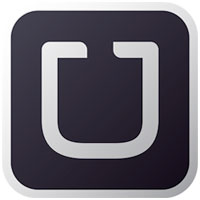
Uber on Tuesday filed an appeal of a California Labor Commission ruling that is widely viewed as a threat to the company’s business model.
The ruling resulted from a claim filed by a San Francisco driver against Uber last year. Details of the earlier action emerged when Uber moved to appeal the commission’s decision handed down in March.
The commission found that the plaintiff was an employee of Uber rather than an independent contractor, as the company had maintained. It ordered payment of US$4,152 in reimbursable expenses and interest.
Faults and Findings
Reuters on Wednesday published a report on the case titled “Uber drivers are employees, not contractors -Calif. Labor Commission.”
However, that headline is inaccurate, Uber maintained in a statement provided to the E-Commerce Times by spokesperson Trina Smith.
“The California Labor Commission’s ruling is nonbinding and applies to a single driver,” Uber said. “Indeed it is contrary to a previous ruling by the same commission, which concluded in 2012 that the driver ‘performed services as an independent contractor, and not as a bona fide employee.’ Five other states have also come to the same conclusion.”
The commission based its decision, in part, on 11 factors that are used to distinguish employees from independent contractors. The California Supreme Court established those 11 factors in 1989 with the court case Borello & Sons, Inc. v. Dept. of Industrial Relations.
Those 11 factors can be used to analyze the relationship between an individual and an organization, according to Tad Devlin, a commercial and insurance litigation partner at Kaufman Dolowich & Voluck.
“The analysis includes consideration of the amount and type of control the principal — Uber, in this case — has over the individual, and what the individual’s duties are, and how they relate to the principal’s business,” he told the E-Commerce Times.
“By obtaining the clients in need of the service and providing the workers to conduct it, Defendants retained all necessary control over the operation as a whole,” reads the California Labor Commission ruling.
The burden of proof falls on the party that seeks to avoid liability. It’s up to Uber, in this case, to prove that its drivers are in fact independent contractors and aren’t employees, the order says. “In other words, there is a presumption of employment.”
Of Fares and Fates
Uber has taken one important step, though a basic one, in indicating that it treats its drivers as independent contractors. It issues 1099-K forms, which typically are used for processing payments via third parties, KDV’s Devlin noted.
“This lends itself to Uber’s argument they are only a platform to connect drivers and passengers,” he said. “However, there is no existing authority approving or challenging these companies’ use of 1099-K forms.”
Even if the commission’s ruling pertains only to the parties named, this current battle could have major implications in Uber’s wider war, because yet another authority has ruled that the company acts and looks and smells like an employer of a vast network of drivers.
It’s important to keep in mind that this decision came down from a deputy labor commissioner, who is at the very bottom of a chain of agencies that decide issues such as this, observed John Skousen, a partner at Fisher & Phillips.
“They could get the message that maybe [other people] should pursue this as well, as part of a collective action under the California Private Attorney General Act, which could be filed on behalf of the attorney general,” he told the E-Commerce Times.
“All similarly impacted individuals could [bring] suit for expenses not reimbursed, along with a number of other allegations that could be added to this private attorney general action,” Skousen explained.
Because the appeal essentially resets the chess board, it’s possible this case could evolve into a class action, he suggested, though he emphasized that he is not privy to either side’s strategies.
The Freelancers
Independent contractors can help to start up a new company or keep established companies growing, but employers must take care, according to Skousen, who noted the increasing difficulty for California employers who want to offer jobs on that basis.
“There’s no way you can eliminate the independent contractor as a possible element in a business’ undertakings,” said Skousen. “So I think employers will just have to be careful that when the words ‘independent contractor’ come up, they’re cautious in looking at all of the potential issues that could come.”
Just the cost of having to defend one or two cases, he cautioned, should be enough to give pause to employers considering freelancers.






















































Social Media
See all Social Media